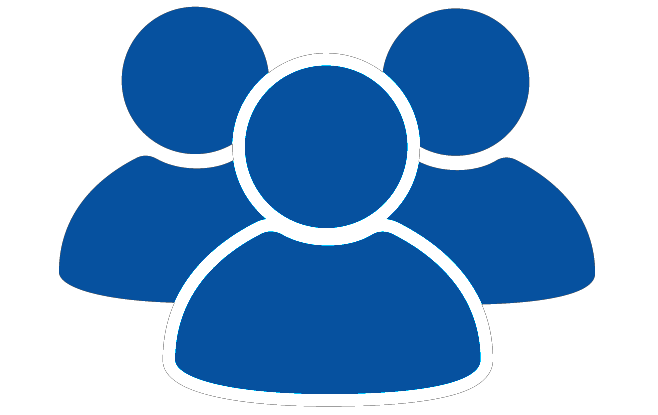If you are in serious debt and cannot meet your repayments when they are due, a formal debt solution could be the best option to tackle your debt. A Debt Relief Notice (DRN) is one of four solutions under the Personal Insolvency Act 2012 (pdf) that can help you to become debt-free within 3 years.
You must apply for a DRN through an Approved Intermediary. There is no fee to obtain a DRN and you can see if you are eligible and apply for a DRN with the help of a MABS Approved Intermediary. This is a free service – contact MABS.
Find out how to qualify for a Debt Relief Notice (DRN) and how the process works.
What is a Debt Relief Notice (DRN)?
A Debt Relief Notice is a notice from the court stating you are not able to pay your debts listed in your DRN. It is a formal, legally binding debt solution. It generally covers only unsecured debt.
A DRN will last for 3 years – known as “the supervision period”. The creditors included in the DRN can no longer contact you asking you to repay debts that are included in your DRN.
At the end of the 3 years, the debts listed in your DRN will be written off. This means that you no longer owe the money.
When a DRN is in place, you are entitled to a reasonable standard of living that includes food, clothing, education, health care, special circumstances and a modest allowance for savings.
If you are granted a DRN, you do not make payments to the creditors named in the DRN unless your financial circumstances improve considerably. If your circumstances improve during the 3-year supervision time, you must tell the Insolvency Service of Ireland (ISI).
There is no fee to obtain a DRN and you can see if you are eligible and apply for a DRN with the help of a MABS Approved Intermediary. This is a free service – contact MABS.
What debts does a Debt Relief Notice cover?
A Debt Relief Notice mainly covers unsecured debts. It is important to know whether your debts are secured or not. A secured loan is one where something you own is attached to the debt as insurance in case you don’t pay. Normally, a mortgage secured by your property is an example of a secured loan. But in the case of a DRN if you had a property, you would not be eligible to apply.
In general, the following debts are unsecured:
- Utility bill arrears (gas, electricity, internet and so on)
- Rent arrears
- Credit card debt
- Store card debt
- Bank overdrafts
- Unsecured bank loans
The MABS Helpline provides an initial checking service to check if you meet the eligibility criteria for a DRN. This service is free – make the call!
Before contacting the MABS Helpline for this eligibility check, you need to have all the relevant information about your debts, assets, income and circumstances. You can gather this information using our Full Financial Picture tool.
Am I eligible for a Debt Relief Notice?
You must meet all of the below conditions to be eligible.
Your MABS Approved Intermediary can help you see if you meet all the conditions – contact MABS.
You must:
- Have total ‘qualifying debts’ below €35,000
- Be insolvent
- Have a disposable income of less than €60 per month after RLEs
- Have assets below €1,500
- Live in Ireland
- Not have given away or sold something at a lower value than it was worth
- Not have paid one creditor more than the others
- Not have had a DRN before
How do I apply for a Debt Relief Notice?
You must apply for a DRN through an Approved Intermediary (AI). This person is authorised by the ISI to support you when you apply for a Debt Relief Notice. You will have to complete a Statement of Affairs(pdf) giving full and honest information about your financial circumstances to the AI.
You can apply through MABS who will arrange a meeting for you with either a Money Adviser or a MABS staff member authorised as an AI. This is a free service. You can also choose an AI from the Register of Approved Intermediaries published by the ISI.
What are the stages of a Debt Relief Notice?
Below is a summary of the stages involved.
| Stage | What happens |
| 1. Contact MABS to check if you are eligible | Call the MABS Helpline on 0818 07 2000, Monday to Friday from 9am to 8pm to check if you are eligible to apply for a DRN. |
| 2. Meeting with Approved Intermediary (AI) or MABS Money Adviser | The Approved Intermediary (AI) or Money Adviser will:
|
| 3. Statement of Affairs completed with supporting documents sent | You need to:
|
| 4. Meeting with AI | AI will:
If you are happy to go ahead with your application, you sign a letter of confirmation called a Letter of Engagement. AI will then start contacting your creditors (if necessary) to check the balances owed to them. |
| 5. Final meeting with AI | AI will:
You need to make a sworn declaration of your DRN application in front of a solicitor, peace commissioner or commissioner for oaths. |
| 6a.Your application is successful |
|
| 6b. Your application is unsuccessful | If your application is rejected, your Money Adviser will work with you to find a solution. |
What are the effects of a DRN?
Effects for you
During the supervision time, you must inform the ISI if:
- You become aware of any error or something left out in the information sent to the ISI.
- You have a ‘material’ (big) change in financial circumstances (income, assets, debts). The ISI will work out if you will need to use some of the money to make repayments.
- your income increases by €400 or more per month. This could be from returning to work, an increase in hours or getting a promotion. If this happens, you must submit half of the full increase to the ISI for payment to your included creditors.
- An income increase is calculated by comparing your new income, to either your income or your Reasonable Living Expenses at the time of your application, and using whichever figure is higher.
- Income is calculated after tax, social insurance payments, levies, and payments made to any debts excluded from the DRN.
- When half of the included debt has been paid, the other half will be written off ending the DRN
- You receive a gift or payment of €500 or more. You must then give half to ISI.
Any income received by the ISI will be shared fairly between creditors.
During the supervision time, you must tell the lender that you are a ‘specified debtor’ if you wish to get credit (loan) of more than €650.
Effects for creditors
A creditor whose debt is included in the DRN cannot:
- Start or continue legal action in relation to that debt
- Contact you for payment (unless you ask them to)
- Enforce a judgment or court/tribunal order
- Apply for or proceed with action to make you bankrupt
- Take steps to repossess goods, unless the creditor owns them or has security (such as hire purchase)
A creditor can still take action against another person jointly named in the debt or named as a guarantor, unless they too have an insolvency debt solution in place.
During the supervision time, a creditor can also apply to the court to object to the DRN, but only on very limited grounds. These grounds include if:
- You weren’t eligible.
- You provided inaccurate information.
- You arranged your affairs to get a DRN.
The court would then consider the case and can:
- Dismiss the objection
- Change the DRN
- Make the supervision longer
- End the DRN
You can read more in the Insolvency Service of Ireland’s DRN guidebook (pdf).
What are my other options?
A DRN may not suit everyone. If a DRN is not for you, you have other options. Talk to MABS if you need any more information.
Creditors often prefer to come to an arrangement with you to repay debt without taking legal action and going to court.
Debt Settlement Arrangement (DSA)
The rules and conditions for a DSA are like those for a DRN but with some differences. There are no limits on your debts, assets or income but all of your debts must be unsecured.
Personal Insolvency Arrangement (PIA)
A PIA covers both secured and unsecured debts. This may suit if you have a mortgage. There are no maximum limits on your assets, income or unsecured debts but your secured debts must be €3 million or less (unless your creditors allow more).
Bankruptcy is your option of last resort. You must first have tried a DSA or a PIA and you must have more than €20,000 of debt. Bankruptcy normally lasts for 1 year. You should get legal advice if you are considering this option.
MABS Report Launch: Debt Relief Notice
MABS was delighted to launch our new report “For the Few but not the Many” which provides an analysis of Debt Relief Notices (DRNs) from a debtor perspective.
The report was compiled by: Dr. Stuart Stamp – Independent Social Researcher at Maynooth University Paul Joyce – Senior Policy Analyst with FLAC The report was launched on Thursday the 23rd of June in Kilmainham Hilton Hotel, Co. Dublin by Fiona Coyne CEO of the Citizens Information Board (CIB).
CIB provided the social policy grant aid for the report. Please enjoy our full recording of the DRN launch event.




Facebook
twitter
Instagram